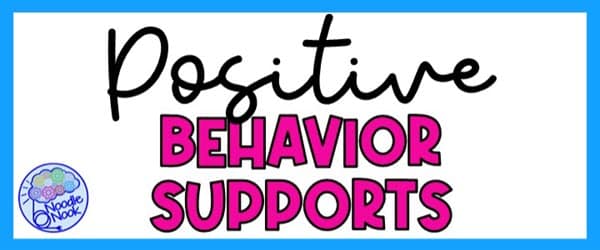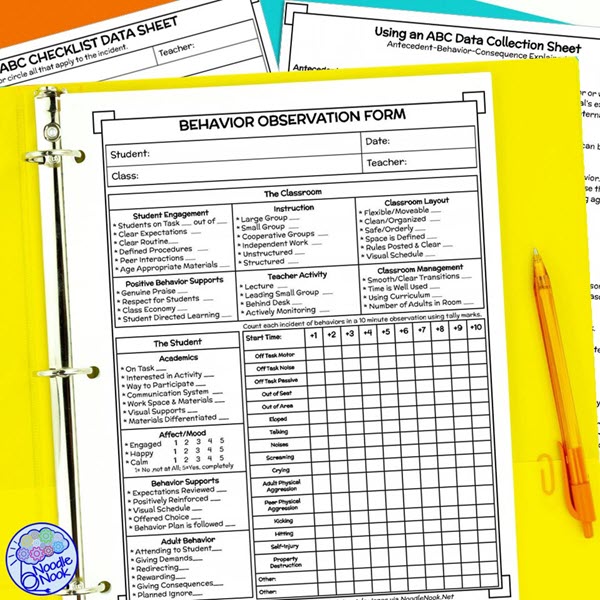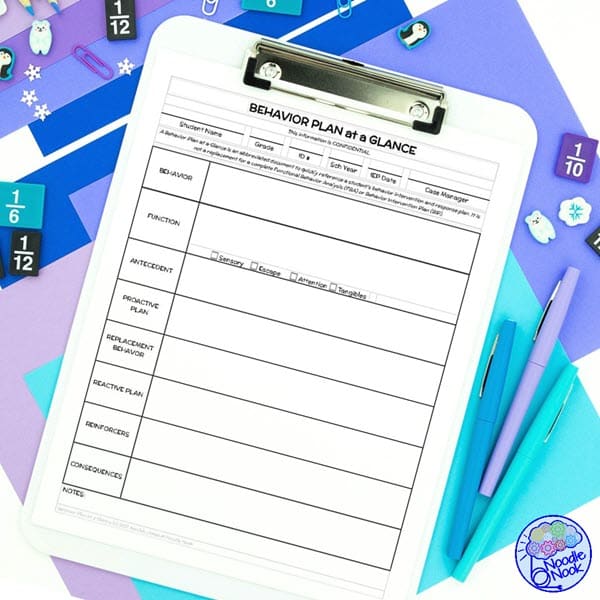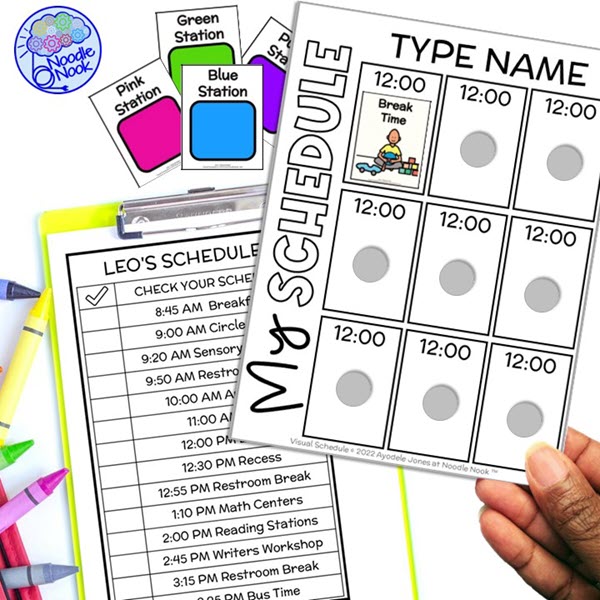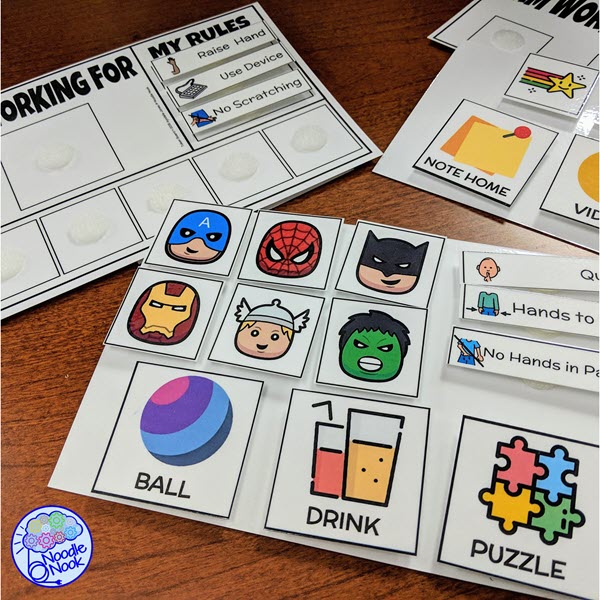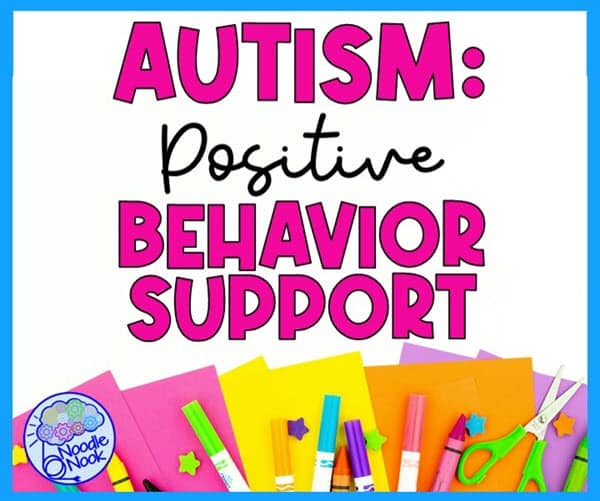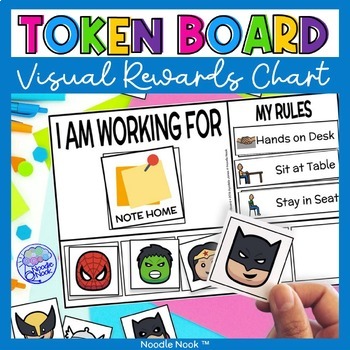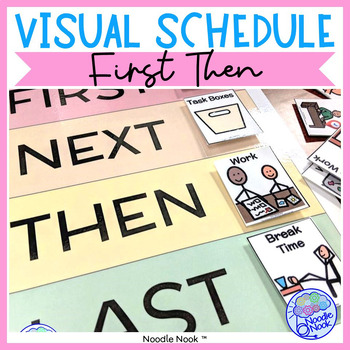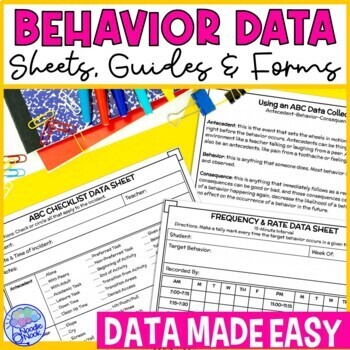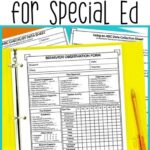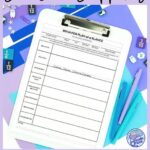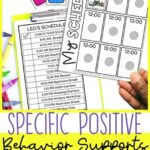With Autism positive behavior support is essential! Teaching is a challenging profession, and when working with students with an autism spectrum disorder or other developmental disabilities, those challenges can be even greater. Autism presents unique challenges for teachers, as students with autism can have difficulty with social relationships, communication skills, and sensory input. These challenges can often result in problematic behaviors that can be disruptive to the classroom environment.
Despite these challenges, it’s important for teachers to remember that all students, regardless of their abilities or disabilities, deserve the best education possible. This is where positive behavior supports come in. By using evidence-based practices and taking a comprehensive approach to support student behavior, teachers can create a positive and inclusive classroom environment that benefits all students.
Throughout this post, we will explore the importance of positive behavior support for students with autism spectrum disorder and other developmental disabilities. We will discuss strategies for understanding and addressing problem behaviors, conducting functional behavior assessments, and using evidence-based interventions such as applied behavior analysis and positive behavior support plans. Additionally, we will cover the importance of data collection, ongoing professional development, and involving family members and other support network members in the intervention process.
Understanding Autism and Problem Behavior
To create an effective positive behavior support plan, it’s essential for teachers to understand the basics of autism spectrum disorder and how it can impact a student’s behavior.
What is ASD or Autism
Autism spectrum disorder (ASD) is a neurodevelopmental disorder that affects communication, social interaction, and behavior. The exact cause of ASD is unknown, but research suggests that it is likely due to a combination of genetic and environmental factors.
The Function of Behavior
One of the most challenging aspects of working with students with autism is understanding the function of their behavior. Every behavior serves a purpose, whether it’s to gain attention, escape a demand, or obtain a tangible item. By conducting a functional behavior assessment (FBA), teachers can identify the specific function of a student’s behavior and create an intervention plan that addresses that function.
Factors Impacting Behaviors
Environmental factors, communication skills, and sensory input can also play a significant role in problem behavior for students with autism. For example, changes in routine or sensory overload can lead to disruptive behavior. Additionally, students with ASD may have difficulty with communication, which can result in frustration and challenging behavior.
Addressing Behaviors
To address problem behavior, it’s important to identify and address any environmental factors that may be contributing to the behavior. Providing students with visual schedules, reducing sensory input, and creating a predictable daily schedule can help reduce disruptive behavior. Additionally, working with students to develop communication skills and alternative ways of expressing their needs and wants can also be effective.
By understanding the basics of autism and the function of behavior, teachers can create a supportive and inclusive classroom environment that promotes appropriate behavior and skill development.
Conducting a Functional Behavior Assessment
One of the most effective ways to create a positive behavior support plan for students with autism is to conduct a functional behavior assessment (FBA). A functional assessment is a process that involves gathering information about a student’s behavior, identifying the function of the behavior, and developing a plan to address the behavior. It is the best way to get an understanding of a behavior and make a purposeful plan. Click here to get a set of behavior data collection sheets.
During an FBA
During an FBA, it’s important to gather input from team members, including the student’s special education teacher, case manager, occupational therapist, and any other professionals who work with the student. It’s also essential to involve the student’s family members in the assessment process to gain a better understanding of the student’s behavior outside of the school setting.
After the FBA
The results of the FBA can be used to create an intervention plan that addresses the function of the behavior. For example, if the behavior is attention-seeking, the intervention plan might include teaching the student more appropriate ways to gain attention, such as asking for help or participating in group activities. If the behavior is escape-maintained, the intervention plan might include breaking down tasks into smaller steps or providing more frequent breaks.
Using the FBA
By using the results of the FBA to inform intervention plans, teachers can create a comprehensive approach to address problem behavior and promote the development of appropriate behaviors and skills. It’s important to remember that each student is unique, and what works for one student may not work for another. By involving team members, parents, and other support network members in the process, teachers can create a plan that is tailored to the individual needs of the student and promotes their overall quality of life.
Evidence-Based Practices for Positive Behavior Support
When it comes to supporting positive behavior in students with autism, it’s important to use evidence-based practices that have been proven effective through high-quality research. Two examples of evidence-based practices for positive behavior support are applied behavior analysis (ABA) and positive behavior support (PBS).
ABA Therapy
ABA therapy is a type of therapy that uses behavioral techniques to teach new skills and modify behaviors. ABA therapy can be used to support skill development, life skills, and social communication. The therapist will create a detailed plan that breaks down new skills into smaller, achievable steps and use positive reinforcement to encourage the child to learn and use the new behavior. ABA therapy is not without controversy with more and more individuals with autism expressing that, to them, ABA was borderline abusive. With that in mind, consider how you implement ABA strategies. Always consider propriety and efficacy when using ABA.
Positive Behavior Support
Positive behavior support (PBS) is a framework that involves creating a positive and supportive environment for the student. PBS focuses on promoting positive social interactions and reducing challenging behavior by using positive reinforcement for appropriate behaviors. Some examples of specific interventions that can be used within a PBS framework include visual schedules, gestural prompts, token boards, and task analysis.
Visual Schedules
A visual schedule can be used to help students understand their daily schedule and anticipate changes in their routine. Gestural prompts involve using physical cues to help the student understand what they need to do next. Token boards can be used to reinforce appropriate behavior by providing a visual representation of progress toward a desired behavior. Task analysis involves breaking down a complex task into smaller steps to make it more manageable for the student.
Recap: EBPs for PBIS
By using evidence-based practices like ABA and PBS, teachers can support the development of positive behavior in students with autism. These interventions are designed to promote the student’s overall quality of life and help them develop the skills they need to succeed in the classroom and beyond.
Specific Positive Behavior Supports
As a special education teacher, it’s important to have a toolbox of strategies and interventions to use when dealing with challenging behaviors in the classroom. Here are some evidence-based practices and specific examples you can use:
1. Use Positive Reinforcement:
Reinforcing appropriate behaviors with praise, tokens, or other rewards can increase the likelihood that the behavior will be repeated. For example, you can say, “Great job sitting quietly during circle time, John! You earned a star on your chart!”
2. Implement a Visual Support:
Visual supports, such as visual checklists, visual timers, or visual schedules, can help students understand the expectations for the day and decrease anxiety. For example, you can say, “John, let’s check your schedule for the day. First, we have math, then snack, and then gym.” Check out these visual schedules from Noodle Nook.
3. Implement a Functional Behavior Assessment:
Conducting a functional behavior assessment can help you identify the function of a behavior and develop a plan to address it. For example, if a student is hitting their peers to get attention, you can teach them appropriate ways to ask for attention, such as raising their hand.
4. Use Gestural Prompts:
Gestural prompts, such as pointing or nodding, can be used to remind students of expected behaviors. For example, if a student is off-task, you can point to the task at hand.
5. Implement a Token Board:
Token boards can be used to reinforce appropriate behaviors over time. For example, when a student earns a certain number of tokens, they can earn a reward, such as extra recess time. Read more about token boards here.
6. Implement a Social Skills Curriculum:
Teaching social skills can help students develop positive social interactions and improve relationships with peers. For example, you can role-play situations where the student can practice listening, sharing, or turn-taking. This a very effective way to address social behavior and develop problem solving.
Remember, each student is unique, so it’s important to tailor interventions to meet the individual needs of each student. With patience, persistence, and a comprehensive approach, you can help your students with autism develop new skills, appropriate behaviors, and a good quality of life.
Prioritizing Data Collection and Professional Development
As a teacher working with students receiving special education services, it’s important to prioritize data collection and ongoing professional development. Collecting data on student behavior allows you to track progress and make adjustments to intervention plans as needed. This ensures that the strategies being used are effective and meeting the student’s needs.
Collecting Data
To collect and analyze data on student behavior, you can use a variety of strategies. One approach is to use a daily behavior chart or log to track the occurrence of specific behaviors throughout the day. You can also use anecdotal records to document observations of the student’s behavior and any potential triggers. Another option is to use technology-based data collection tools that allow you to record and analyze behavior data in real-time.
Professional Development
It’s also important to prioritize ongoing professional development as a teacher working with students with autism. This can include training in social emotional learning and mental health, as well as evidence-based practices for positive behavior support. By staying up to date on the latest research and best practices in special education, you can better support your students and promote positive outcomes.
Attending professional development opportunities like workshops, conferences, and webinars can provide valuable insights and strategies for working with students with autism and other developmental disabilities. It’s also helpful to connect with other teachers and special education professionals to share resources and collaborate on intervention plans.
RECAP: Data and PD
In conclusion, prioritizing data collection and ongoing professional development are key components of supporting positive behavior in students with autism. By tracking progress, making adjustments to intervention plans, and staying up to date on the latest research and best practices, teachers can create a supportive and effective learning environment for all students.
You may need some resources to help you implement positive behavior supports in your classroom. These resources can help you get started!

